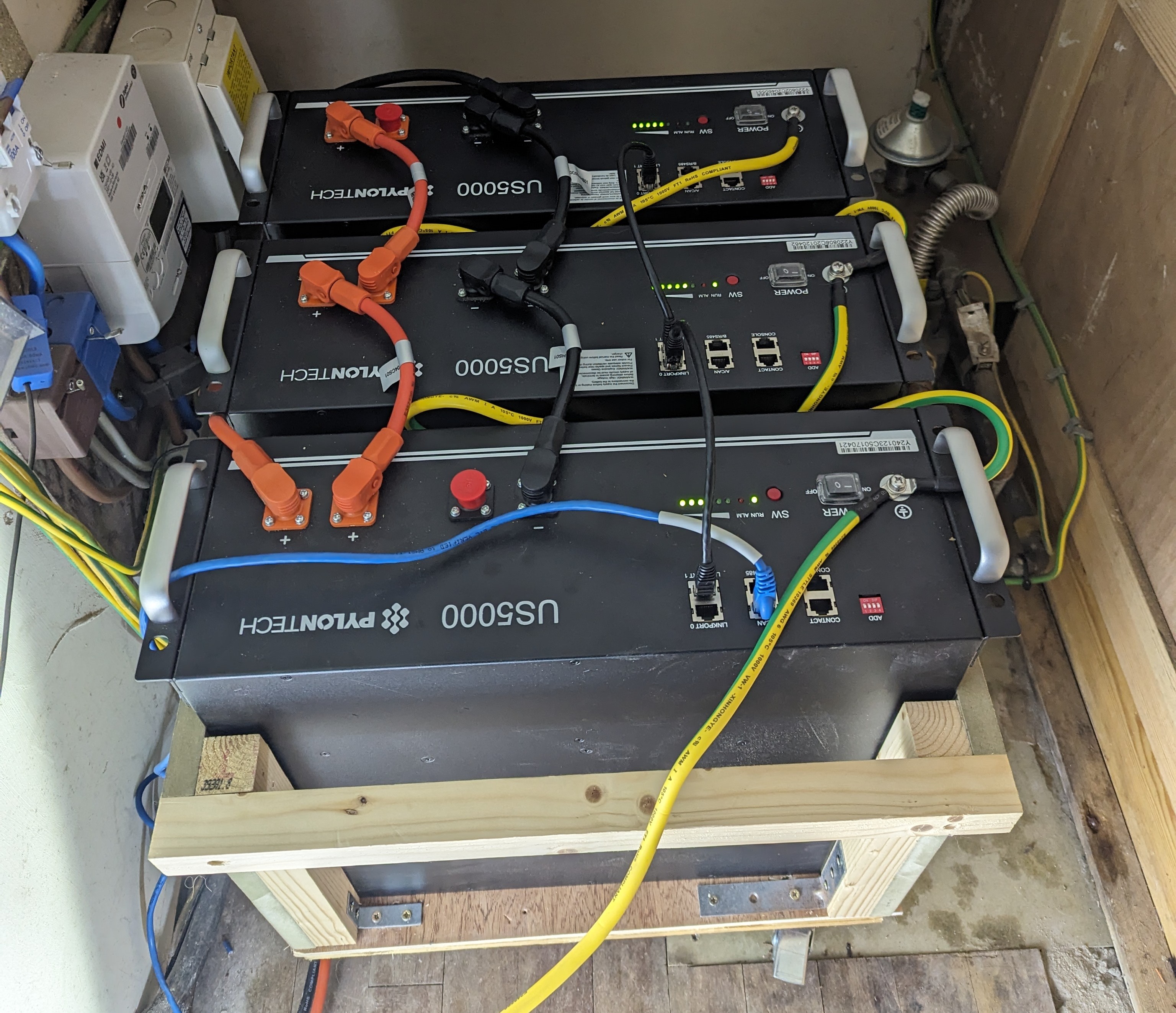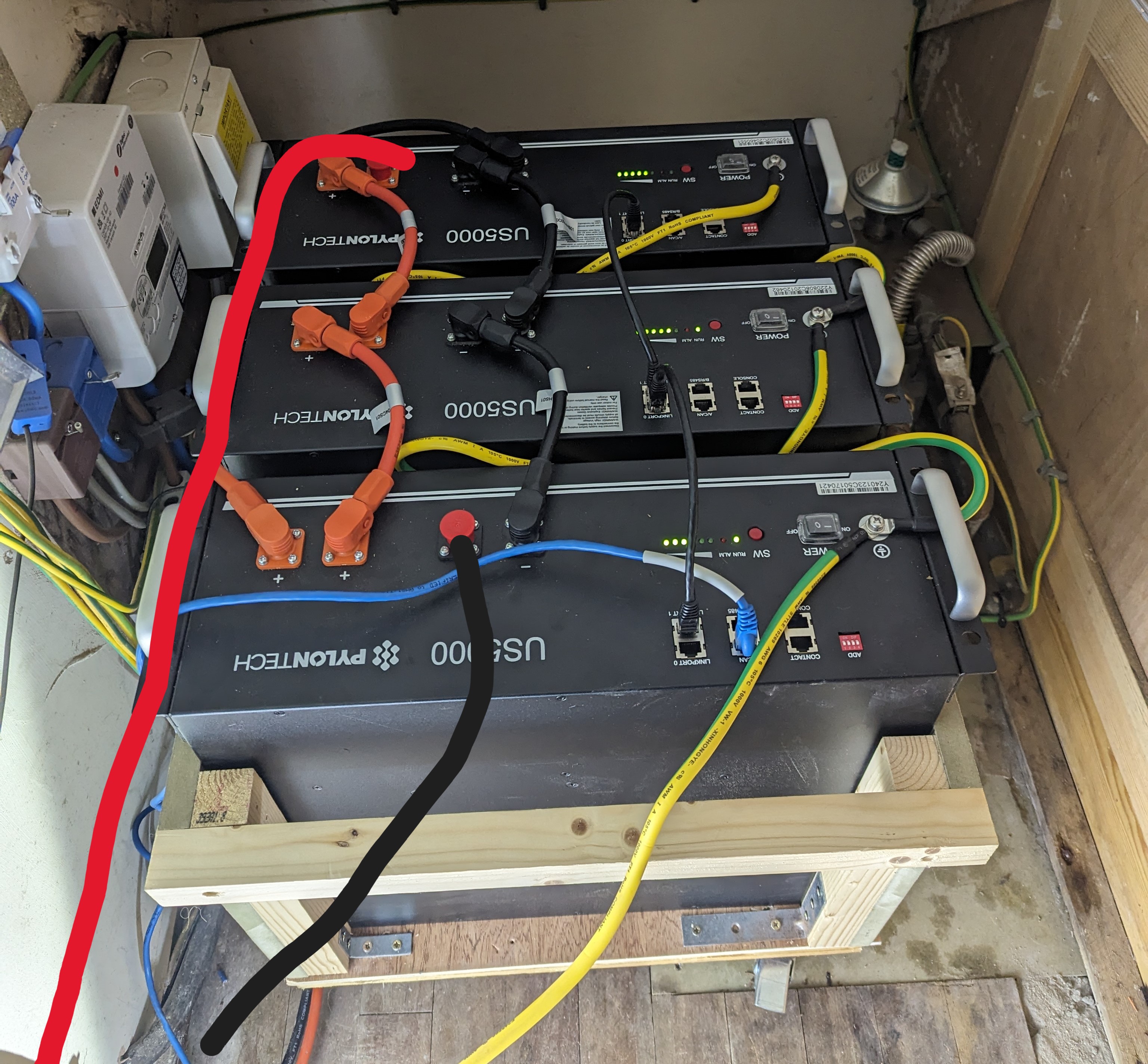I have had 2xUS5000 batteries connected to a Multiplus-II/48/5000/70-50 for the past 2 years and they have been running flawlessly. This week I added a 3rd US5000 and while refreshing my memory on the ESS settings I saw some posts about the supplied cables to the inverter not being large enough. Even at max output or when charging, the standard cables don't get remotely warm but I do have a spare set of the long cables and figured I should use use them if that would be better from a safety and performance perspective.
This is my setup now:

Would I just add the extra set to the spare poles top and bottom? Like this:

Thanks!
